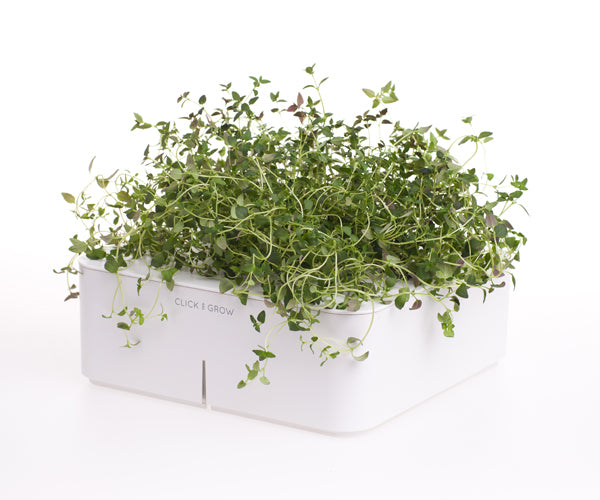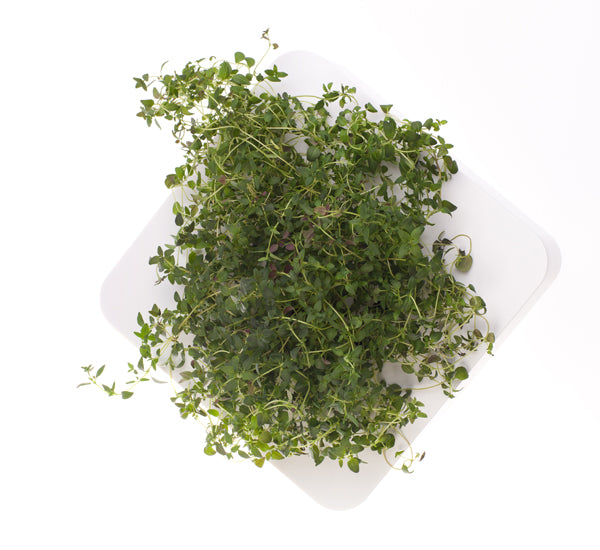News
A look at our edibles - Thyme
Every Tuesday we cover the uses and qualities of our edible Click & Grow plants. This week we’ll look at Thyme.

Background
Interestingly, there are a number of theories as to the origins of the name thyme. Most agree that its derived from the Greek word thumos or from the Latin fumus which both mean smoke. The association with smoke probably comes from the fact that thyme was used in sacrifices or from the plants fragrant odor, which is often tied with the word fumigate.
What we do know is that thyme originates from the Mediterranean area and in ancient times, thyme was appreciated for its antiseptic properties. For example, Greeks used it as a fumigant while Egyptians made use of its qualities in the embalming process.
Among the Greeks, there was an expression „to smell of thyme“ which was a sincere complement inferring gracefulness. Imagine using that phrase as a complement today!
Culinary use
Thyme has a slightly pungent and spicy flavor. It blends well with other herbs, especially with rosemary.
Thyme is widely used in meat and fish dishes, marinades, apple jellies and in foods involving eggs, cheese, beans, mushrooms, potatoes and oats. It’s also an ideal ingredient to spice up pizzas and pastas. Now i wonder whether it would have been easier to list the dishes where thyme is not used in?
As thyme imparts an intense flavor to the recipes, it should be added sparingly. As cooking strongly affects the flavor and fragrance of thyme, it should be added to cooking recipes at the last moment, for example directly to the plate or when removing the receptacle from the oven.

Medicinal use
Thyme is packed with numerous health benefiting plant derived compounds, minerals and vitamins that are essential for wellbeing.
The leaves of thyme are one of the richest sources of potassium, iron, calcium, manganese, magnesium and selenium.
-
Potassium is an important component of cell and body fluids that helps controlling heart rate and blood pressure.
-
Iron is a mineral that is present in every living cell. Its necessary for the production of hemoglobin which is the primary component of red blood cells. Iron is also important to many immune system functions.
-
Calcium is well known for playing an important role in building stronger bones and teeth.
-
Manganese aids in the metabolism of food, works as an antioxidant to help prevent cancer and also plays a part in the production of sex hormones.
-
Magnesium helps to maintain normal muscle and nerve function, supports a healthy immune system and keeps bones strong.
-
Selenium is an important nutrient to fight heart disease and cancer. Together with vitamin E, selenium works hard to slow down the aging and hardening of tissues.
Oil of thyme contains 20-54% thymol which is an antiseptic and the main active ingredient in various commercially produced mouthwashes such as Listerin. Before the advent of modern antibiotics, oli of thyme was used to medicate bandages.
Thymol has also been shown to be effective against various fungi that commonly infect toenails. In addition thymol can also be found as the active ingredient in some all-natural alcohol-free hand sanitizers.
Have a cough or bronchitis? Make a healing tee by infusing thyme in water. Thyme tea is also useful in treating diarrhea.
Next week we’ll look at lemon balm.
Cheers!